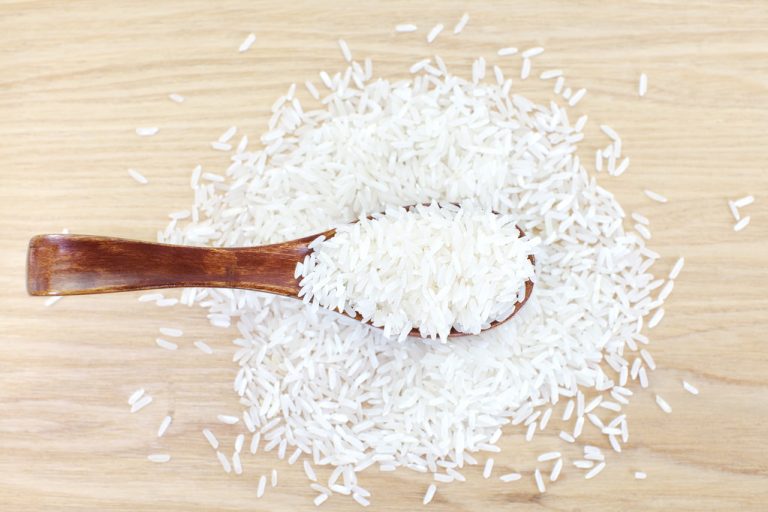In fact, everyone knows that arsenic is poisonous. But did you know that the toxin is also found in rice? In this article you will find out what dangers the substance poses to children.
How does arsenic get into rice?
Arsenic is a metalloid that occurs naturally in the ground – more or less often depending on geological conditions. Types of grain, including rice plants, absorb arsenic compounds through their roots. These get into the fruit via the metabolism.
Rice is grown in flooded fields because it thrives best in wet, humid conditions. More arsenic ends up in the rice plants via the water than in other cereals that are cultivated dry.
How much arsenic ends up on the consumer’s plate depends not only on the regional soil conditions, but also on the processing of the rice grains. Because the arsenic settles in particular on the edge of the grains.
How much arsenic does rice contain?
Consumers cannot see how much arsenic the purchased rice contains. According to the BfR, the amount of rice that an adult can eat without causing health problems has not yet been researched.
According to the Federal Institute, the average amounts of arsenic in white rice are between 0.1 and 0.2 milligrams per kilogram. Brown, so-called natural rice, contains more inorganic arsenic because the outer layers are largely removed from white rice. Higher amounts than in white rice were also measured in rice cakes and rice flakes.
Is that why children are not allowed to eat rice?
The BfR assessment, according to which it is not very likely that the consumption of rice leads to health risks, applies to all age groups: adults, the elderly as well as children and infants.
Nevertheless, the BfR recommends parents not to feed their infants and small children exclusively with rice-based drinks or complementary foods such as rice porridge. According to the experts, products such as rice cakes should also vary with snacks without rice.
In addition, the BfR points out that rice-based baby food does not meet the needs of infants anyway due to the unsuitable nutrient composition.
Does washing rice help?
It is difficult to wash out the arsenic compounds from finished products such as rice porridge or rice snacks.
For rice itself, the BfR recommends washing it in plenty of water and boiling it immediately before consumption. In the case of rice with small amounts of arsenic, some of this can migrate into the water.
The cooking water should be poured off immediately after cooking.

Arsenic-free rice coming soon?
In a study published in spring, a Chinese research team, including scientists from the University of Heidelberg, succeeded in finding a travel plant that defies dangerous arsenic.
The researchers exposed over 4,000 rice varieties to arsenic-containing water and observed their growth. Only one of the examined plants with the name “astol1” proved to be tolerant to the toxic metalloid.
The plant develops the amino acid cysteine, which is an important element for the plant’s own development of phytochelatins. These substances have a detoxifying effect and are formed by plants in response to pollutants. The neutralized arsenic is stored in the roots of the plant before it reaches the rice grains and can become dangerous to humans. Scientists consider this plant particularly suitable for agricultural use.

